By Violet Nguyen, Class of 2028
In China, few social arenas change as quickly and dramatically as education. Over the past decade, new university models have emerged, digital learning companies have risen and fallen, and national reforms have reshaped how millions of families navigate academic competition. It is within this landscape that Prof. Fangsheng Zhu, Assistant Professor of Sociology at Duke Kunshan University and a member of the Governing China Cluster at the CSCC, conducts his research. We interviewed Prof. Zhu to learn more about his findings in two CSCC-funded projects: “The Rise and Fall of China’s EdTech Industry” (Faculty Research and Creative Activity Grant) and “China’s Education Industry after the Double Reduction Policy” (Faculty–Student Collaborative Research Project Grant).

The Double Reduction Policy (双减) was introduced by China’s Ministry of Education in 2021. Its goal was to reduce the academic pressure on primary and middle school students by banning after-school academic tutoring for grades one through nine. Before this reform, tutoring was a massive industry. Some of the largest education companies in the world were Chinese, many listed on the U.S. stock market. Families spent enormous amounts of time and money on extra lessons. Then, almost overnight, that entire sector was shut down and the landscape of private education rewrote. Professor Zhu’s research explores how state power, family aspiration, and private enterprise continually reshape the meaning of education during this process.
Could you start by telling us how did you first become interested in education as a sociologist?
I think education is an arena where a lot of social actors come together to do something important. This peculiar area is where social change becomes visible because everyone is invested in it, and it’s becoming even more critical over time. People nowadays stay longer in school and the competition for certain credentials are getting more intense. At a result, the state, families, and now massive private companies are all pouring money and attention into education. Therefore, studying education is a fascinating and important way of studying how societies organize opportunity and mobility.
The second reason is more personal. When I was in college, I started in engineering but during my second year, I switched to sociology. For my undergraduate thesis, I picked the topic of migrant children’s schools in China, as I came from a town with many migrant workers and had experienced rural-to-urban migration myself. I realised that education reveals inequality, but also resilience and creativity. That was my first exposure to the sociology of education, and I never really left the field after that.
You recently published a paper on how how students choose joint-venture universities like DKU. What makes those choices interesting to you?
My research focuses on education in China, especially on why some things in education change over time while others remain remarkably stable. I am interested in how new institutions, like joint-venture universities such as Duke Kunshan, emerge and how people learn to understand and evaluate new educational opportunities.
My recent work on education looks at one dimension of that decision making process. Joint-venture universities are a new kind of institution in China. They don’t fit into the traditional system that includes state-sponsored elite programs like Project 985 and Project 211. Because they’re new and small, families don’t have a clear reference point to judge their quality. Therefore, when parents and students consider a joint-venture university, they have to think for themselves and develop their own criteria for what counts as a “good education” without relying on traditional rankings or public perceptions. This kind of independent judgment reflects how educational change requires creativity and courage: there have to be people that are willing to take a leap of faith. I find that moment of uncertainty and creativity very interesting: it is a sign of educational change in motion.
Much of your current research focuses on the transformation of China’s education industry. Could you tell us what you found most revealing about the rise of EdTech companies and their sudden decline after 2021?
EdTech is somewhat outside the traditional domain of education research. The industry encompasses the network of venture-funded companies that apply technological and entrepreneurial models to education. The “tech” in the last wave was primarily the internet, used to deliver classes or content. This industry was connected by venture capital and had its own conferences and media.
Around 2018, I worked for an EdTech firm and talked to startup founders and investors. At that time, the industry was booming. Many educators I met treated education purely as a business opportunity and operated as if they were in a private business, separating from the government’s immediate attention. Very few consider the political economy or the potential repercussions of their high-profile, profit-driven activities in a sector as sensitive as education. When tutoring companies grew too large, too profit-driven, and too influential over how millions of children learned, the state stepped in.
The Double Reduction policy in 2021 didn’t just ban tutoring for younger students; it also banned EdTech companies from getting listed on the stock market. This killed the capital component of the industry because venture capital requires an “exit,” like a public listing, for early investors to profit. By blocking that exit, the policy made the entire venture-funded model unviable. Within months, most of the industry collapsed. It was a forceful demonstration of how much state interventions and industry can reshape an important arena like education.
The Double Reduction Policy was enacted in 2021. How have families and the industry adapted in the years since?
I’m still in the process of finding definitive answers. But based on preliminary fieldwork, we find that adaptations have been uneven and often reinforce existing inequalities. Wealthier families have shifted to smaller-scale or one-on-one tutoring, often in private settings that are harder to regulate while less affluent families have found these services increasingly unaffordable.
The companies themselves had to transform radically. Some of the biggest players laid off 80 to 90 percent of their staff. It’s also really interesting how that policy worked. It only banned academic tutoring, so theoretically, you can also do non-academic tutoring. Are learning English or playing math games academic or non-academic? Many have switched from tutoring services to selling hardware which is what you now see in Chinese malls as “learning machines.” These are specialized tablets or laptops with pre-installed learning content and maybe some AI tutors. The is one of the ways companies used to circumvent the regulations on tutoring services.
However, the investment has not sprung back. Before 2021, China’s EdTech scene was as big as or bigger than the US’s. Now, I estimate the scale of venture funding is perhaps a tenth or a twentieth of what it is in the US. An interesting side effect is that with such high barriers to entry, fewer new startups emerge, which ironically gives the remaining bigger players a larger advantage in the market.
EdTech was often advertised as a way to make education more equal and accessible. Did it succeed?
Unfortunately, not really. When I talked to EdTech entrepreneurs, many genuinely believed their technology would make high-quality education resources accessible to everyone at a cheaper rate. However, academic literature overwhelmingly points to something called the “digital gap.”
Learning online requires a good device, a reliable internet connection, familiarity with the technology, and supportive adults at home who can manage the hardware and ensure the child is focused. All these factors mean that education inequality is often much larger at home than in school, where everyone shares the same space and resources. Contrary to the best intentions, EdTech almost always increased inequality.
For example, massive open online courses like Coursera or edX are are mostly completed by highly motivated, educated urban students. The people who benefit the most are usually the ones who already have strong educational backgrounds. The only exception I’ve seen is in a place like South Korea, where tutoring is so pervasive across all social classes that when most kids use a tool, it can narrow the gap. However, in most contexts, including China, the EdTech model ends up reproducing social stratification.
Looking ahead, how do you see China’s education system evolving?
I think we already have an excellent education system as measured by student exam performance and a vast number of excellent STEM graduates. The issue going forward is whether we can foster more creative skills and well-rounded education that does less violence to students and allows them more freedom.
This depends on many things: policymakers recognizing how educational change truly happens, entrepreneurs being willing to create new types of education providers that do things differently, and families being willing to try these new paths. Institutions like joint-venture universities have a role to play in inducing change by shifting attention away from exams, though we still only serve a tiny fraction of students.
The other unavoidable factor is AI. A new wave of education technology is coming, defined by AI rather than just the internet. The critical question is: Will this new technology simply provide more efficient AI-powered exam preparation, further intensifying the existing competition? Or will it generate genuinely new types of education with new rules for selection and success that create more space for creativity and change? The answer will shape the next chapter of education in China and beyond.


